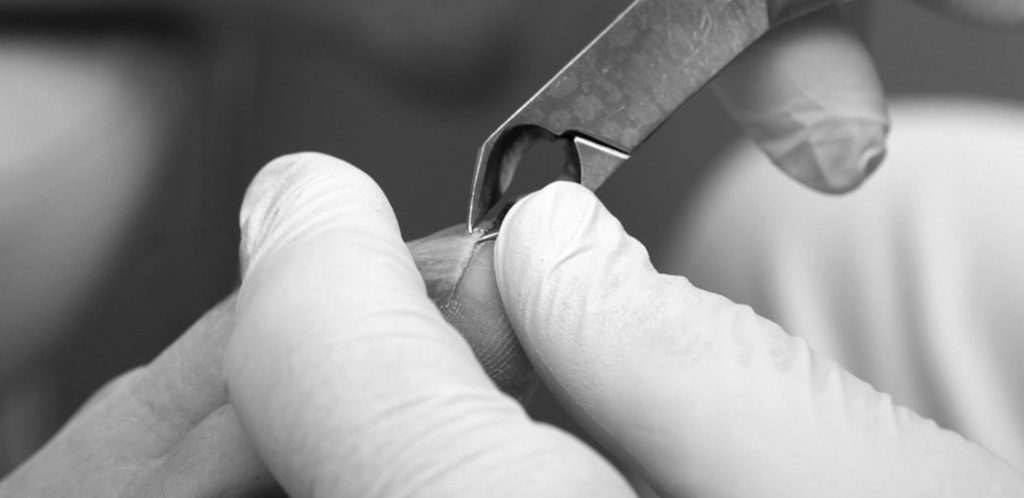The Ins & Outs of Ingrown Toenails!


Suffering from ingrown toenails is a painful and frustrating ordeal. An ingrown toenail simply means that the nail edge has penetrated and grown into the surrounding skin. In most cases, the nail curves down into the skin, but in some cases it could be that there is excess skin/tissue surrounding the nail that the nail has grown into. Either way, the nail has pierced the skin and that is a very painful and uncomfortable problem to have.
Why do ingrown toenails occur?
Ingrown toenails don’t just have one distinct cause but have many. For a lot of people, it is unfortunately their nail cutting technique. Toenails should be cut in a straight, clean line. Curving the edges of the nail too much can encourage the nail to curve down into the skin. Not cutting the very edge of the nail and ‘pulling’ the nail off can also leave a nail spicule at the edge of the nail which will then grow into the skin. It is often difficult to see or obstructed by the surrounding skin so you won’t know that it’s there. Following the same principle,‘picking’ your nails instead of cutting them can cause the same issue. Tight footwear can also cause ingrown toenails because of the pressure it creates on the toes and surrounding skin that pushes into the nail. For others, their cause are uncontrollable genetic factors that dictate the way their nails grown. Don’t worry – regardless of the cause there are definitely solutions to both alleviate ingrown toenails and to stop them from coming back once and for all!
How do I know if I have ingrown toenails?
The biggest symptom is pain on touch, pressure and movement. The toe may often appear red and swollen. As with anything that breaks the skin, ingrown toenails pose a serious risk of infection so must be treated with caution.
What can I do for it? Can I stop it from coming back permanently?
Those with diabetes, nerve damage or poor circulation should never attempt to treat their ingrown toenails at home. If you have good general health and suspect you have an ingrown toenail, soak the nail in warm salty water for 5 minutes then dry thoroughly. If pain persists, it will need to be examined by your Podiatrist that will determine the proper course of treatment. This will involve treating the infection if present and clearing the offending nail edge. Because ingrown toenails can reoccur, you can discuss with your podiatrist if a more permanent way of stopping ingrown toenails is appropriate for you, whereby a solution is used to stop the nail cells at the very edge of the nail from growing the nail as part of a minor surgical procedure. This leaves you with a normal and straight looking nail edge. Your podiatrist will also provide you with education and advice for managing and caring for your toes.


